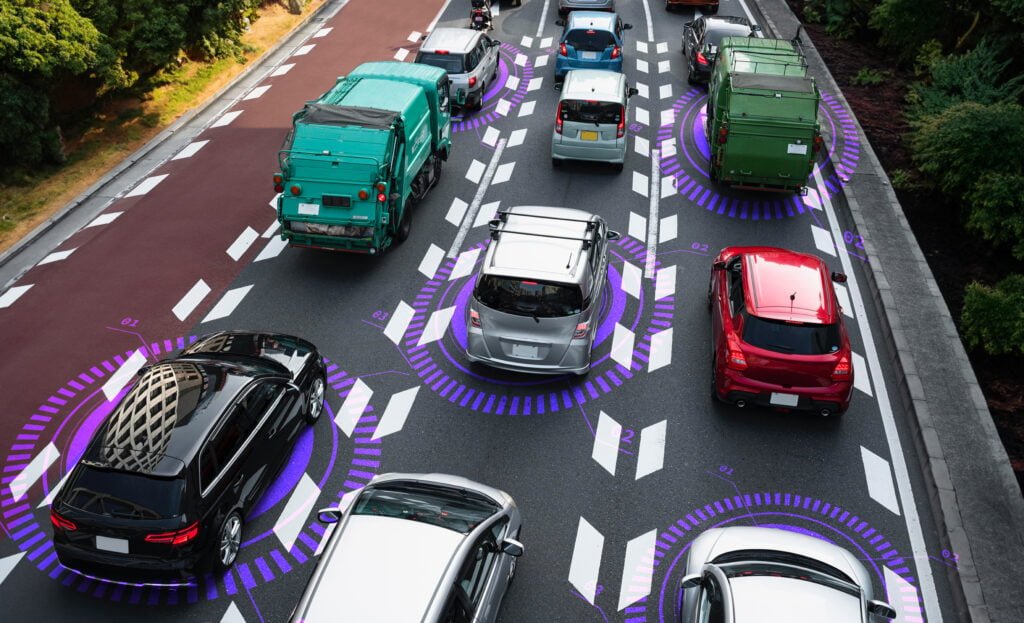Innovative traffic management solutions are desperately needed as cities continue to struggle with growing traffic congestion, safety issues, and environmental issues. One intriguing way to turn traditional traffic lights into intelligent, flexible systems is to use Field-Programmable Gate Arrays (FPGAs). The idea of FPGA-powered smart traffic lights is discussed here, along with how they might completely change traffic control.
First, we’ll analyze the challenges that exist in traffic management today, emphasizing inefficiencies in conventional traffic systems, safety risks, and concerns with congestion. We’ll dive into FPGA technology next, outlining its reprogrammable features and a broad range of uses.
We’ll go into more depth about the benefits of FPGA-powered smart traffic lights later on, including improved traffic flow, safety features, energy efficiency, and adaptability. Case examples from the real world will demonstrate their efficacy.
We’ll examine the cost, integration, maintenance, scalability, and data security elements of FPGA-based systems while acknowledging their limitations and implications.
Understanding Traffic Management Issues
A vital component of urban infrastructure, traffic management has a big influence on people’s quality of life in cities all over the world. In order to maintain safety, lessen traffic, and increase overall transportation efficiency, it entails regulating and controlling traffic flow. To truly transform traffic management, one must first understand the fundamental problems and difficulties that it faces.
A. Traffic Congestion and Its Impact
Congestion as a Common Problem: Urban regions are plagued by traffic congestion, which makes commuters’ lives more difficult and increases their fuel consumption and travel times. It happens when traffic is either stationary or moves slowly because there is more demand for road space than there is available.
Economic Costs: Significant economic effects of congestion include decreased production, higher fuel consumption, and wear and tear on automobiles. By causing delays in the delivery of products and services, it also has an impact on businesses.
Environmental Concerns: Traffic congestion contributes to air pollution and greenhouse gas emissions, which have adverse effects on air quality and public health. It is also a significant factor in urban noise pollution.
B. Safety Concerns on the Road
Accidents and Injuries: Traffic accidents are a major public safety concern. They result in injuries and fatalities, causing immense human suffering and economic costs. Improving road safety is a fundamental objective of traffic management.
Driver Behavior: Distracted driving, speeding, and other reckless behaviors are common causes of accidents. Effective traffic management strategies need to address these issues through enforcement and education.
Pedestrian and Cyclist Safety: Traffic management also encompasses ensuring the safety of pedestrians and cyclists. Designing infrastructure that accommodates these road users is crucial.
C. Inefficiencies in Traditional Traffic Light System
Fixed-Timing Traffic Lights: Traditional traffic light systems often rely on fixed-timing schedules, which do not adapt to real-time traffic conditions. This can lead to inefficiencies, such as unnecessary waiting times at empty intersections.
Limited Data Utilization: Conventional traffic lights may lack the ability to gather and process real-time data from the road, making it difficult to optimize signal timing for the current traffic flow.
Manual Adjustments: In many cases, traffic light adjustments are made manually, which can be slow to respond to changing conditions and may not be data-driven.
Benefits of Smart Traffic Lights
FPGA-powered smart traffic lights provide several benefits that have the potential to drastically transform traffic management. These advantages include less traffic jams, better safety measures, and increased energy efficiency. Here, we examine the main benefits of intelligent traffic signals:
A. Improved Traffic Flow and Reduced Congestion:
Dynamic Traffic Control: Smart traffic lights use real-time data and advanced algorithms to adapt signal timings based on current traffic conditions. This dynamic control helps optimize traffic flow and minimizes congestion, particularly during peak hours.
Traffic Synchronization: With the ability to coordinate traffic lights along a route, smart traffic lights can create green corridors for traffic, allowing vehicles to move smoothly through multiple intersections without unnecessary stops.
Reduced Wait Times: By accurately assessing the volume of vehicles at different times of the day, smart traffic lights can minimize waiting times for motorists and pedestrians, leading to more efficient use of road infrastructure.
B. Enhanced Safety Features:
Intersection Safety: Smart traffic lights are equipped with sensors and cameras that can detect vehicles, pedestrians, and cyclists. They adjust signal timings in real time to prioritize safety, reducing the likelihood of accidents at intersections.
Emergency Vehicle Priority: These systems can quickly identify approaching emergency vehicles and give them green lights, ensuring their rapid passage through traffic, which can be crucial in life-saving situations.
Pedestrian Safety: Smart traffic lights can detect pedestrians waiting to cross the road and provide them with extended green times or pedestrian-specific phases to enhance their safety.
C. Energy Efficiency and Reduced Environmental Impact:
Energy-Efficient LED Lighting: Smart traffic lights are often equipped with energy-efficient LED bulbs, reducing energy consumption and operational costs.
Off-Peak Mode: During low-traffic periods, smart traffic lights can enter an energy-saving mode, dimming or turning off unnecessary lights to conserve energy.
Reduced Emissions: By optimizing traffic flow and minimizing congestion, smart traffic lights can reduce vehicle idling and the associated emissions, contributing to improved air quality in urban areas.
D. Adaptability to Changing Traffic Conditions:
Event Management: Smart traffic lights can adapt to special events, accidents, or road construction, dynamically rerouting traffic to minimize disruptions and maintain the overall flow of vehicles.
Weather Adaptability: These systems can adjust signal timings to account for adverse weather conditions, such as rain or snow, helping to improve safety during inclement weather.
FPGA-Powered Smart Traffic Lights
In order to address traffic congestion, improve safety, and lessen environmental effect, intelligent solutions are becoming increasingly important as traffic management systems adapt to the needs of expanding urban populations and rising vehicle traffic. Field-Programmable Gate Arrays (FPGAs) are one of these cutting-edge systems that have earned notoriety for its capacity to transform traffic signals and greatly increase traffic management efficiency.
Programmable integrated circuits, or FPGAs, provide a high level of performance and flexibility. They are perfect for real-time applications such as smart traffic signals since they may be set up to carry out specified duties. Here, we explore the realm of FPGA-driven smart traffic lights to learn how this innovation is transforming traffic control.
How FPGA Technology is Applied to Traffic Management:
Real-time Data Processing:
- One of the primary advantages of FPGA-powered smart traffic lights is their ability to process vast amounts of data in real-time.
- Traditional traffic light systems rely on pre-determined, fixed timing patterns. In contrast, FPGAs can analyze live traffic data, including the number of vehicles, pedestrian crossings, and emergency vehicles, to adjust signal timings on the fly.
- This dynamic response helps optimize traffic flow and reduce congestion.
Adaptive Signal Control:
- Smart traffic lights equipped with FPGAs can adapt to changing traffic conditions.
- They use various sensors, cameras, and data sources to assess the actual traffic situation at an intersection.
- If there’s a sudden influx of traffic on one side or an accident, the FPGA can adjust signal timings to prioritize the affected direction, thus preventing gridlock and improving safety.
Efficient Energy Usage:
- FPGAs excel at optimizing energy consumption. They can reduce energy consumption by dimming or turning off lights when there are no vehicles or pedestrians, only activating them when necessary.
- This not only saves energy but also extends the life of traffic light components, reducing maintenance costs.
Connectivity and Communication:
- FPGAs facilitate seamless communication between traffic lights, vehicles, and traffic management centers.
- This connectivity enables the implementation of advanced features like traffic data sharing with autonomous vehicles, emergency vehicle signal preemption, and even pedestrian crosswalk countdowns.
- In the case of autonomous vehicles, the FPGA can transmit data about the traffic light status, helping these vehicles make informed decisions.
Remote Monitoring and Maintenance:
- With FPGA-powered traffic lights, authorities can monitor the status of intersections remotely.
- This means quicker identification of faults or damage, leading to faster response times for maintenance crews.
- Additionally, remote updates and reprogramming can be performed, allowing for swift adjustments to traffic patterns and timings without the need for physical intervention.
Data Analytics and Planning:
- FPGAs can collect and process vast amounts of traffic data over time. This data can be used for traffic analysis, helping authorities identify congestion patterns and plan infrastructure improvements more effectively.
- Furthermore, predictive analytics can be employed to anticipate traffic issues and proactively address them.
Customization:
- Unlike fixed-cycle traffic lights, FPGA-powered systems are highly customizable.
- They can be tailored to suit the specific needs of an intersection or region, adapting to unique traffic patterns and requirements.
- This flexibility ensures that the traffic management system remains efficient and adaptable as conditions change.
Challenges and Considerations
The implementation of FPGA-powered smart traffic lights offers numerous benefits, but it also comes with its fair share of challenges and considerations that must be carefully addressed to ensure the successful integration and operation of these systems. Here, we delve into the key challenges and considerations:
A. Cost Considerations:
Initial Investment: Deploying FPGA-powered smart traffic lights can be costly due to the need for specialized hardware, software, and infrastructure upgrades.
Maintenance Costs: Regular maintenance, software updates, and hardware replacements contribute to ongoing expenses.
Training and Expertise: Ensuring that personnel are trained to maintain and operate FPGA-based systems is essential, and this training can be expensive.
B. Integration with Existing Infrastructure:
Legacy Systems: Many cities have existing traffic management systems that may not seamlessly integrate with FPGA-powered traffic lights. Compatibility and interoperability issues need to be resolved.
Retrofitting: Adapting existing traffic light structures and control systems to accommodate FPGA technology can be a complex and costly process.
Data Integration: Coordinating data from various sources, such as sensors, cameras, and central traffic management systems, can be challenging and requires careful planning.
C. Maintenance and Scalability:
Regular Maintenance: FPGA-powered smart traffic lights require proactive maintenance to ensure optimal functionality. This includes monitoring hardware and software components, identifying and addressing issues promptly, and conducting software updates.
Scalability: Expanding the system to cover a larger area or accommodate growing traffic needs may pose challenges, particularly regarding data processing capacity and communication infrastructure.
D. Privacy and Data Security Concerns:
Data Privacy: Smart traffic lights gather vast amounts of data, including vehicle and pedestrian movements. Ensuring the privacy of this data and complying with data protection regulations are crucial.
Data Security: Protecting traffic management systems from cyber threats and unauthorized access is a top priority. Robust security measures and encryption are necessary to prevent data breaches and system disruptions.
E. Power and Energy Supply:
Power Reliability: Ensuring a stable power supply to FPGA-powered traffic lights is vital. Power outages can disrupt traffic management systems and compromise safety.
Energy Efficiency: While smart traffic lights are designed to be more energy-efficient, their continuous operation still requires a significant amount of electricity. Optimizing energy consumption is essential.
F. Public and Stakeholder Acceptance:
Public Perception: Introducing new technology can sometimes be met with resistance or skepticism from the public. Effective communication and education campaigns are needed to gain public acceptance.
Stakeholder Engagement: Collaborating with local government agencies, law enforcement, and other relevant stakeholders is crucial for the successful deployment of FPGA-powered smart traffic lights.
Conclusion
A potential answer to the problems with contemporary traffic management is the use of FPGA-powered smart traffic signals. Through the processing of real-time data and intelligent decision-making regarding signal timing, these systems optimize traffic flow, lessen congestion, and improve safety. By reducing idle time and enhancing traffic control overall, they support environmental sustainability and energy efficiency.
But issues like data security, scalability, cost, integration, and maintenance must be resolved. To overcome these challenges and seize the possible advantages, policymakers and urban planners must work together.
Future developments in FPGA technology and its application to traffic management should be anticipated as technology progresses, enhancing newer innovations such as autonomous vehicles. The broad implementation of these systems will be greatly aided by changes in legislation and policy.
In conclusion, FPGA-powered smart traffic lights offer a promising path to more efficient, safer, and environmentally friendly urban transportation systems, shaping the cities of the future.


![What is FPGA Introduction to FPGA Basics [2023] computer-chip-dark-background-with-word-intel-it](https://fpgainsights.com/wp-content/uploads/2023/06/computer-chip-dark-background-with-word-intel-it-300x171.jpg)









